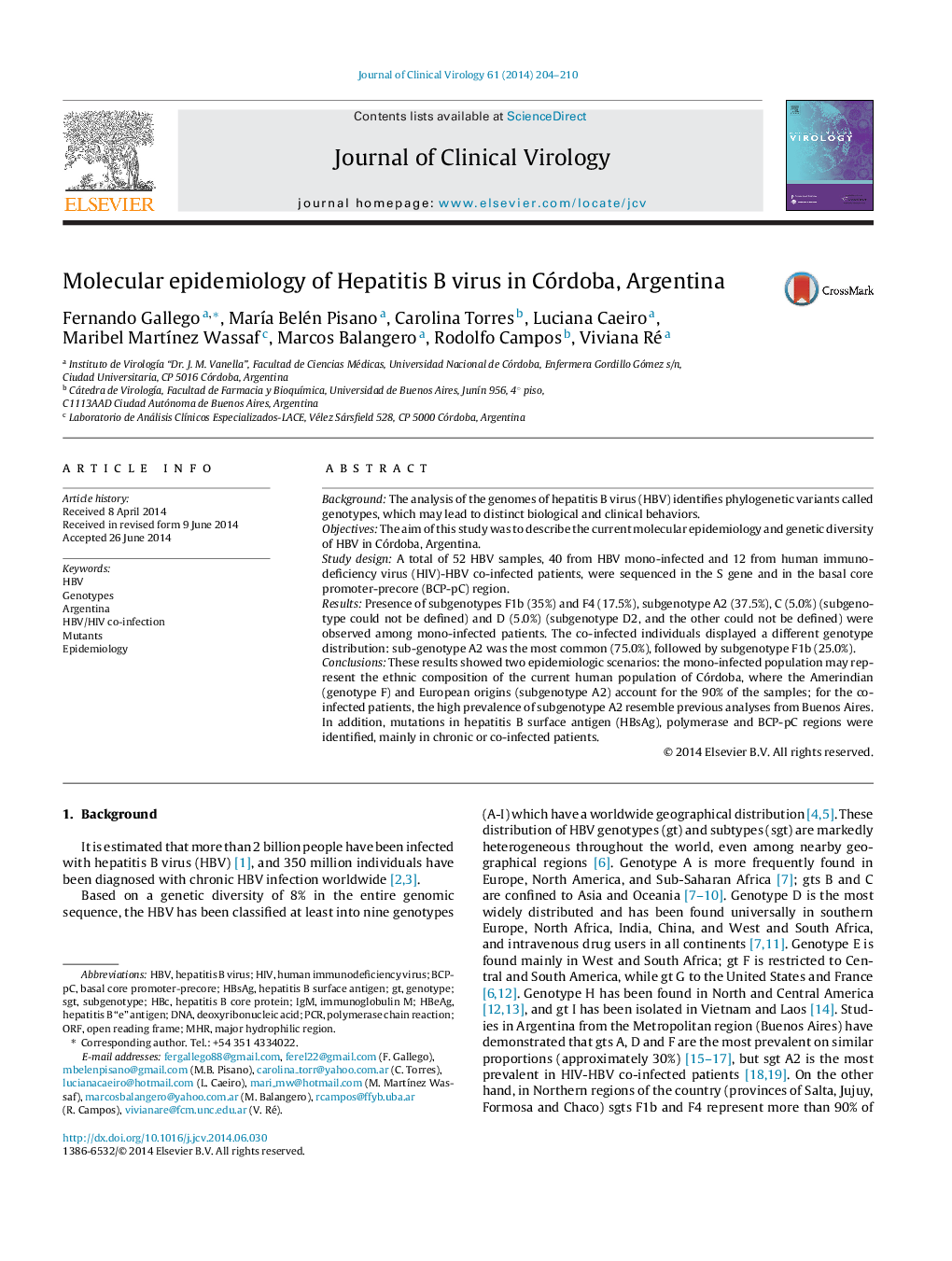| Article ID | Journal | Published Year | Pages | File Type |
|---|---|---|---|---|
| 3368903 | Journal of Clinical Virology | 2014 | 7 Pages |
BackgroundThe analysis of the genomes of hepatitis B virus (HBV) identifies phylogenetic variants called genotypes, which may lead to distinct biological and clinical behaviors.ObjectivesThe aim of this study was to describe the current molecular epidemiology and genetic diversity of HBV in Córdoba, Argentina.Study designA total of 52 HBV samples, 40 from HBV mono-infected and 12 from human immunodeficiency virus (HIV)-HBV co-infected patients, were sequenced in the S gene and in the basal core promoter-precore (BCP-pC) region.ResultsPresence of subgenotypes F1b (35%) and F4 (17.5%), subgenotype A2 (37.5%), C (5.0%) (subgenotype could not be defined) and D (5.0%) (subgenotype D2, and the other could not be defined) were observed among mono-infected patients. The co-infected individuals displayed a different genotype distribution: sub-genotype A2 was the most common (75.0%), followed by subgenotype F1b (25.0%).ConclusionsThese results showed two epidemiologic scenarios: the mono-infected population may represent the ethnic composition of the current human population of Córdoba, where the Amerindian (genotype F) and European origins (subgenotype A2) account for the 90% of the samples; for the co-infected patients, the high prevalence of subgenotype A2 resemble previous analyses from Buenos Aires. In addition, mutations in hepatitis B surface antigen (HBsAg), polymerase and BCP-pC regions were identified, mainly in chronic or co-infected patients.
